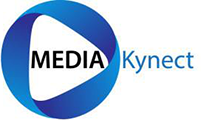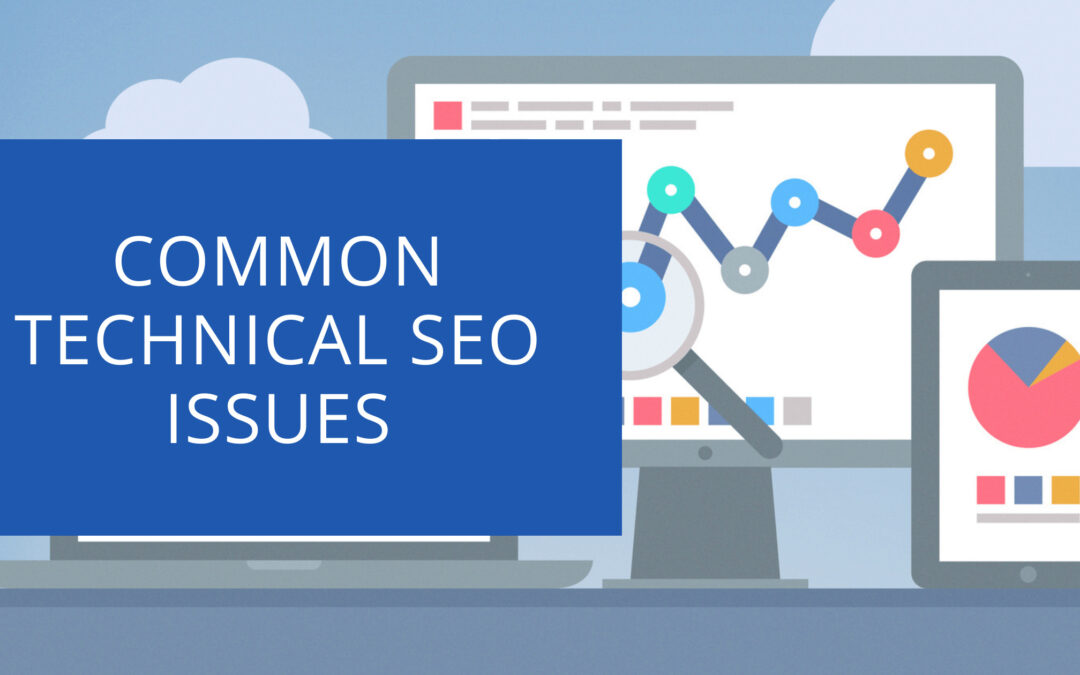The world of SEO can be a tricky one to navigate, especially for those who are new to the field. Many factors contribute to ranking highly on search engines, and it is important to understand them all.
Technical SEO is an essential component in this process. If you have not taken the time yet to learn about technical SEO issues then now would be a good time! In this article, we will cover 16 of the most common technical SEO issues as well as how you can fix them.
Contents
What is technical SEO?
Technical SEO deals with site optimisation from a technical perspective. This is different from content marketing and other types of off-site work that influence your rankings, as it focuses on the website itself.
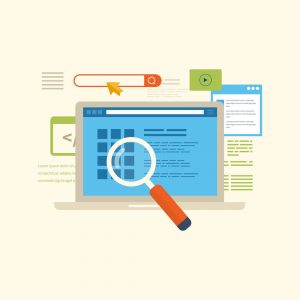 When you hear about Google algorithms or updates like Panda and Penguin, these are technically considered part of technical SEO because they target websites whose content does not meet their criteria for high-quality results.
When you hear about Google algorithms or updates like Panda and Penguin, these are technically considered part of technical SEO because they target websites whose content does not meet their criteria for high-quality results.
Technical issues can also be responsible for poor user experience which will lead to lower rankings over time if left unresolved.
Common examples include indexability problems, low page load speed, duplicate content, broken links, incorrect redirects, server errors, and inconsistent URL structure.
However, many people new to this field do not realise just how much impact there is between factors such as crawl rate and backlink quality. Technical SEO can be a daunting topic to master, but it is one of the most powerful tools in your arsenal for ranking highly on Google and other search engines.
16 of the most common technical SEO issues
404 errors
404 errors are HTTP status codes that indicate that the page or file you were trying to access could not be found. This can happen for a variety of reasons such as:
- The page has been deleted or moved
- The URL has been changed
- The website is down or offline
There are a few things you can do to fix 404 errors, depending on the cause. Here are some tips:
- Check to see if the page has been deleted or moved. If it has, update your links accordingly.
- If the URL has been changed, update your links accordingly.
- If the website is down or offline, try again later.
- If you’re getting 404 errors on pages that don’t exist, create a custom 404 page. This is a page that will show when someone tries to access a page on your website that doesn’t exist. You can either create this yourself or use a plugin like 404page.
- If you’re getting 404 errors for pages that do exist, fix the broken links.
Broken links
Broken backlink errors indicate that there is a link to your website on another site and the domain the page belongs to no longer exists.
There are many reasons why a domain can be deleted: it could have been hacked, bought by someone else and redirected, expired, etc. But for this article we will focus on 404 errors – these either exist permanently or as new pages.
To fix broken backlinks you need to use automated software like Xenu’s Link Sleuth (free) which crawls through your site looking for broken links and provides you with a complete report on all of them.
The program then lists out the websites where those links point to with information such as anchor text and incoming linking pages. You can then update the link on the incoming page to fix it.
Duplicate content
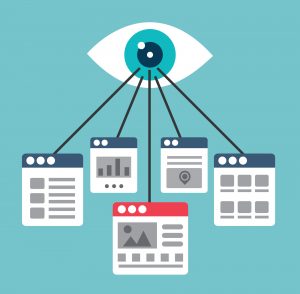 Duplicate content is a major problem for any website looking to rank highly on search engines. This is content that exists on more than one page of your website and is usually unintended.
Duplicate content is a major problem for any website looking to rank highly on search engines. This is content that exists on more than one page of your website and is usually unintended.
There are a few ways to fix duplicate content:
- Use a canonical tag: A canonical tag is an HTML tag that tells search engines which version of a page is the original. When you use this tag, it prevents search engines from indexing multiple versions of the same page and penalises you for having duplicate content.
- Create unique content: The best way to fix duplicate content is to create unique content for each page on your website. This will ensure that Google only indexes one version of each page and gives you credit for all of the content on your website.
- Use 301 redirects: 301 redirects are a way of telling browsers and search engines that a page has been permanently moved to a new location. This is a good way to fix duplicate content because it keeps the old page’s link juice and passes it on to the new page.
Incorrect indexing
Google indexing is the process of Google’s search engine algorithm trawling through websites to create an index of all the websites that it can find. This index is then used to return the most relevant results for a user’s search query.
Write about how to fix indexing issues
There are a few things you can do to fix incorrect indexing:
- Submit your website to Google: The best way to make sure that your website is indexed correctly is to submit it to Google. You can do this by using the Google Search Console (formerly known as Webmaster Tools).
- Make sure your website is crawlable: Another way to ensure that your website is indexed correctly is to make sure that it’s crawlable. This means that search engine bots should be able to access all of the pages on your website without any problems.
- Use robots.txt: You can use a robots.txt file to tell search engine bots which pages on your website they should and shouldn’t index. This is a good way to prevent duplicate content and other crawl errors.
Keyword cannibalisation issues
Keyword cannibalisation is the situation where keywords from one page appear on another page, usually unintentionally. This is bad because it means that you’ll be competing with yourself for search rankings.
To fix keyword cannibalisation issues:
- Google Keyword Planner: Use a tool like Google’s AdWords Keyword Planner to find which keywords are most relevant to your website and create different content around those topics. This will help you rank highly in SERPs related to each of those keywords.
- Monitor your website’s search engine rankings: The best way to keep track of whether or not you’re suffering from keyword cannibalisation is to monitor your website’s search engine rankings. You can do this using a tool like Google Analytics.
- 301 redirects: As mentioned earlier, 301 redirects are a way of telling browsers and search engines that a page has been permanently moved to a new location. This is good for fixing keyword cannibalisation issues because it keeps the old page’s link juice and passes it on to the new topic-related content.
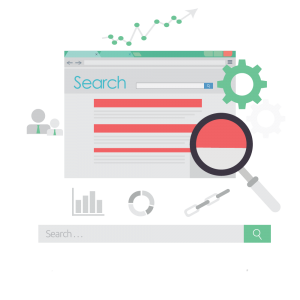 Alt tags are an HTML attribute that allow you to provide a textual alternative to an image. This is important because it ensures that people who are visually impaired can still access the information on your website. Alt tags also help with SEO, as they’re another way of telling search engines what your images are about.
Alt tags are an HTML attribute that allow you to provide a textual alternative to an image. This is important because it ensures that people who are visually impaired can still access the information on your website. Alt tags also help with SEO, as they’re another way of telling search engines what your images are about.
If you’re missing alt tags on your images, there are a few things you can do to fix the issue:
- Add alt tags to your images: The best way to make sure that your images have alt tags is to add them yourself. You can do this by editing the code of your website’s pages or using a plugin like WP Alt-Tag.
- Use a plugin: If you’re not comfortable editing the code of your website or adding alt tags to your images manually, you can use a plugin like WP Alt-Tag.
Missing or incorrect robots.txt
A robots.txt file is a text file that tells search engine bots which pages on your website they should and shouldn’t index. This is a good way to prevent duplicate content and other crawl errors.
There are a few things you can do to fix a robots.txt file:
- Make sure your website is crawlable: Another way to ensure that your website is indexed correctly is to make sure that it’s crawlable. This means that search engine bots should be able to access all of the pages on your website without any problems.
- Use robots.txt: You can use a robots.txt file to tell search engine bots which pages on your website they should and shouldn’t index. This is a good way to prevent duplicate content and other crawl errors.
- Check for crawl errors: You can use a tool like Google’s Webmaster Tools to check for crawl errors on your website. This will help you fix any issues that might be preventing your website from being indexed correctly.
Missing XML site maps
A XML sitemap is a file that contains a list of all the URLs on your website. This file can be used to help search engines index your website more effectively. Additionally, a XML sitemap can be used to help visitors find the pages on your website that they’re looking for.
There are a few things you can do to fix XML sitemaps:
- Make sure your website is crawlable: Another way to ensure that your website is indexed correctly is to make sure that it’s crawlable. This means that search engine bots should be able to access all of the pages on your website without any problems.
- Create a XML sitemap: You can create a XML sitemap for your website using a tool like XML Sitemaps Generator.
- Submit your XML sitemap to Google: You can submit your XML sitemap to Google using Google’s Webmaster Tools.
No HTTPS security
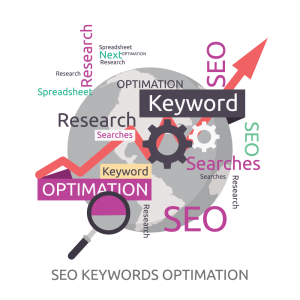 HTTPs (Secure Hypertext Transfer Protocol) is a security protocol that provides a secure connection between a web server and a browser.
HTTPs (Secure Hypertext Transfer Protocol) is a security protocol that provides a secure connection between a web server and a browser.
This helps protect user data, such as passwords, credit card information, and other sensitive information. HTTPs is widely used on the web today and is considered to be the standard for secure communications.
There are a few things you can do to fix HTTPs:
- Make sure your website is HTTPS-enabled: The first thing you need to do is make sure that your website is HTTPS-enabled. This means that your website will use the HTTPS security protocol to communicate with browsers.
- Get an SSL certificate: The next step is to get an SSL certificate for your website. An SSL certificate is a security certificate that verifies that your website is using the HTTPS security protocol.
- Configure your website’s settings: Once you have an SSL certificate, you need to configure your website’s settings to use it. This will ensure that all communications between your website and browsers will be secure.
No internal linking
Internal linking is the process of linking one page on your website to another page on your website.
Internal linking can help improve your website’s SEO by helping search engines crawl and index your website more effectively. Additionally, internal linking can help visitors find the pages on your website that they’re looking for.
These internal links pass “link juice” and relevance throughout your website.
There are a few things you can do to fix internal linking:
- Make sure your website is crawlable: Another way to ensure that your website is indexed correctly is to make sure that it’s crawlable. This means that search engine bots should be able to access all of the pages on your website without any problems.
- Create an outline for your website: The first step in creating an internal linking structure is to create an outline for your website. This will help you determine the structure of your website and how you want to link between pages.
- Link internally: Once you have an outline, you need to start linking internally between pages on your website. This will help pass “link juice” and relevance throughout your website.
No schema markup
Schema markup is a type of code that you can add to your website to help search engines better understand the content on your website. This code provides additional information about the content on your websites, such as the title, author, date of publication, and other metadata.
Schema markup is also used to generate Rich Snippets in search engine results pages. Rich Snippets are additional pieces of information that are displayed in search engine results pages for certain types of content. These snippets can include images, ratings, prices, and other data.
The best practices for using schema markup are to use the correct type of markup for the content on your website, to provide as much information as possible, and to keep your markup up-to-date.
- Use the correct type of markup: The first step is to make sure that you’re using the correct type of markup for the content on your website. Schema.org provides a list of types of markup that you can use for your website.
- Provide as much information as possible: The second step is to provide as much information as possible about the content on your website. This will help search engines better understand the content on your website.
- Keep your markup up-to-date: The third step is to keep your markup up-to-date. Search engines regularly crawl websites to help ensure that their content is being indexed correctly. If you add or change the content on your website, make sure to update your schema markup as well.
Not implementing 301 redirects
301 redirects are permanent URLs that take visitors to a new page on your website with an updated web address.
If you need to change the URL of the webpage on your domain for any reason, you can use a 301 redirect.
A 301 redirect ensures search engines know about the changes and continue indexing the content on your site appropriately.
There are a few things you need to keep in mind when using 301 redirects:
- Make sure the server is set up to handle 301 redirects: The first step is to make sure that your server is set up to handle 301 redirects.
- Check for duplicate content: The second step is to check for duplicate content. If you duplicate content on your website you could combine the pages and use 301 redirect to redirect to the page that has all the content.
- Check for 404 errors: You can use a 301 redirect to redirect missing pages to a different page.
Slow page speed
Page speed is the time it takes for a page to load. Page speeds are important because they affect a website’s user experience, SEO, and conversion rates.
There are a few things you can do to improve your page speed:
- Optimise images: One of the main reasons for slow page speeds is large image files. You can reduce the file size of your images by using compression tools.
- Use a content delivery network: Another way to improve page speeds is to use a content delivery network (CDN). A CDN will cache your website’s content on servers around the world, which will help reduce the load time for your visitors.
- Enable compression: Compression will reduce the size of the files that need to be downloaded, which will improve page speeds.
- Minify CSS and JavaScript files: Minifying CSS and JavaScript files will remove unnecessary code from the files, which will improve page speeds.
- Cache static pages: Caching static versions of your pages on the server can help reduce the load time for your visitors.
Thin Content
 Thin content is content that doesn’t provide any value to users. Thin content can be found on websites in the form of short blog posts, pages with little or no text, and pages with low-quality or duplicate content.
Thin content is content that doesn’t provide any value to users. Thin content can be found on websites in the form of short blog posts, pages with little or no text, and pages with low-quality or duplicate content.
Thin content can also negatively affect a website’s SEO because it’s not valuable to users and can bring down the overall quality score of the website.
If you notice that your website has thin content, there are a few things you can do to fix it:
- Create high-quality content: The first step is to create high-quality content. This will help differentiate your website from others and provide value to users.
- Add more text to pages: The second step is to add more text to your pages. This will help improve the overall quality score of your website.
- Remove low-quality or duplicate content: The third step is to remove low-quality or duplicate content from your website and implement 301 redirects as mentioned above.
Unoptimised titles and meta descriptions
Titles and meta descriptions are key elements of SEO. They help tell search engines what a page is about, which can help improve a website’s ranking on search engine results pages (SERPs).
Titles are the titles that appear in the browser tab, and meta descriptions are the short snippets that appear under the title in the SERP.
Optimising them can have a big impact on how your website performs in search engine results.
There are a few things you can do to optimise your titles and meta descriptions:
- Make sure they are relevant to the page: The first thing you need to do is make sure your titles and meta descriptions are relevant to the page they are assigned to.
- Include keywords: You should also include a keyword in your titles and meta descriptions. Make sure to use the exact match type for keywords that you want to rank for, but try not to overuse them.
- Make the most of headings: You should make the most of heading tags on your website because they are important elements when it comes to SEO. Heading tags are H tags. They increase a page’s readability and usability, but they also give search engines more information about the content on your pages.
- Ensure there is only one main topic per page: The last thing you should do when optimising titles and meta descriptions is to make sure that each page has only one main topic because this will help improve click-through rates (CTRs).
Conclusion
In this article, we looked at the most common technical SEO issues and how to fix them. If you’re having any of these issues on your website, make sure to follow the steps mentioned in this post to help improve your website’s SEO.
If you have any questions about technical SEO or this post, please don’t hesitate to contact us.
